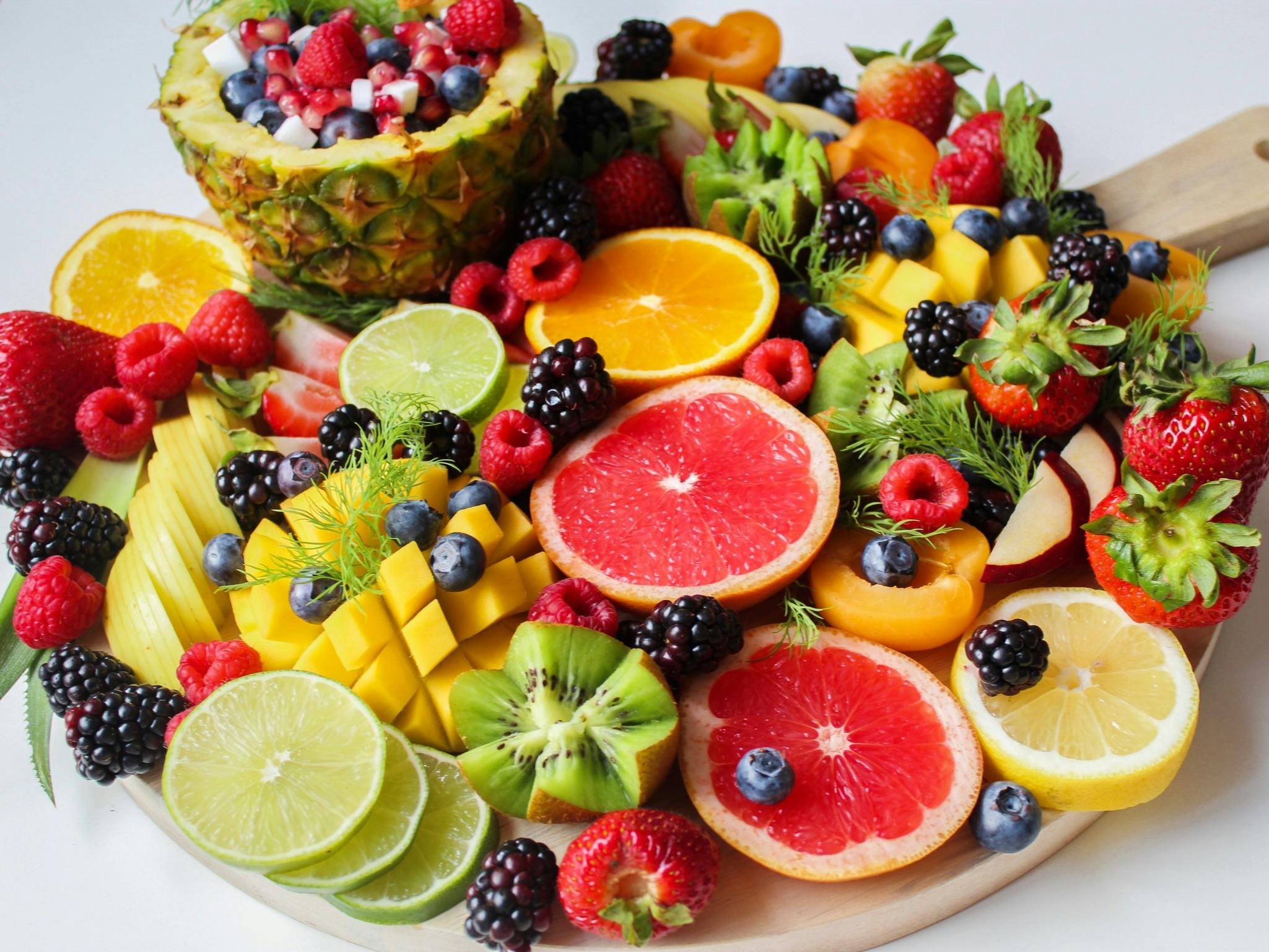Can Certain Foods Really Shrink Fibriods?

A creative writer with a voracious appetite for fashion, beauty,…
Fibroids, also known as uterine fibroids or leiomyomas, are non-cancerous growths that develop in the uterus. They consist of muscle and fibrous tissue and can vary in size, ranging from minuscule and undetectable to pressing inconveniences.
Fibroids can develop within the uterine wall, inside the uterine cavity, or on the outer surface of the uterus. While the exact cause of fibroids is unknown, hormonal factors, particularly estrogen and progesterone, are believed to play a role in their growth.
What are the causes of fibroids?
The exact cause of fibroids is unknown, but estrogen and progesterone, hormones that stimulate the uterine lining during the menstrual cycle, appear to promote growth. In addition, fibroids tend to grow during periods of hormonal fluctuation, such as during pregnancy or while taking hormonal contraceptives. There may also be a genetic predisposition to developing fibroids, as they tend to run in families. Women with a family history of fibroids are at a higher risk of developing the condition.
Fibroids are more common in women of African descent compared to women of other racial or ethnic backgrounds and are most commonly diagnosed in women in their 30s and 40s, although they can develop at any age.
Your weight can come into play. Being overweight or obese is associated with an increased risk of developing fibroids, possibly due to higher estrogen levels in adipose (fat) tissue. Some studies suggest a diet high in red meat and low in fruits and vegetables may be associated with a higher risk of developing the condition, although more research is needed to confirm this claim.
Certain reproductive factors, such as starting menstruation at an early age, never having given birth, or having a first child when you’re older, may increase the risk of developing fibroids. Other health conditions, such as endometriosis, adenomyosis, and Polycystic Ovary Syndrome (PCOS), may be associated with an increased risk of fibroids.
All the aforementioned factors may contribute to the development of fibroids, but the exact cause can vary from person to person, and many women with one or more risk factors may never develop fibroids.
Check out the common symptoms of fibroids…
Signs of fibroids can include heavy menstrual bleeding, prolonged menstrual periods, pelvic pain or pressure, frequent peeing, constipation, and pain during sex. However, many women with fibroids may not experience any symptoms. In addition, symptoms may vary depending on the size, number, and location of the fibroids within the uterus.
- Menstruation: Some women with fibroids may experience no symptoms, while others may encounter heavy or prolonged menstrual periods, often with the passage of blood clots. Plus, they may feel pelvic pain or cramping during menstruation, which can be severe in some cases.
- Pelvic pressure: Often described as a feeling of fullness or heaviness in the lower abdomen, these fibroids apply pressure or pain to the pelvic region.
- Frequent urination: Large fibroids can press against the bladder, causing frequent need to urinate or difficulty emptying the bladder completely.
- Constipation: Fibroids that press against the rectum can cause constipation or difficulty passing stools.
- Pain during sex: Fibroids located near the surface of the uterus or within the uterine cavity can cause pain or discomfort during sexual intercourse.
- Swollen abdomen: Large fibroids can cause the abdomen to swell or become enlarged, leading to a visible increase in abdominal girth.
- Body pains: Fibroids that press against the nerves in the pelvis can cause back pain or pain in the legs.
- Infertility: In some cases, fibroids can interfere with fertility by blocking the Fallopian tubes or disrupting the implantation of a fertilized egg in the uterus.
- Pregnancy complications: This condition may increase the risk of miscarriage or pregnancy complications, such as preterm labor, placental abruption, or breech presentation.
Note: Many of these symptoms can also be caused by other gynecological conditions, so it’s essential to consult a healthcare provider for proper diagnosis and management.
Treatment of fibroids
Treatment for fibroids depends on the severity of signs, the size, and position of the fibroids, and whether a woman intends to become pregnant in the future. Treatment options may involve medication to relieve symptoms, hormonal therapy to shrink fibroids, minimally invasive procedures to remove or destroy fibroids, or surgery, such as a hysterectomy, in severe cases.
Can you shrink fibroid with food?

There is limited scientific evidence to support the idea of shrinking fibroids with food. Nevertheless, maintaining a healthy diet rich in certain nutrients may help manage symptoms and foster general health.
- Fruits and vegetables: Aim to include colorful fruits and vegetables in your diet, as they are rich in vitamins, minerals, and antioxidants that support overall health. Leafy greens, berries, citrus fruits, and cruciferous vegetables, like broccoli and kale, are particularly helpful.
- Whole grains: Choose foods such as brown rice, quinoa, whole wheat, oats, and barley over refined grains. Whole grains are high in fiber, which can help regulate hormone levels and promote healthy digestion.
- Healthy fats: Incorporate sources of healthy fats into your diet, such as avocados, nuts, seeds, and fatty fish like salmon and mackerel. Healthy fats are necessary for hormone production and may reduce inflammation.
- Lean protein: Include lean protein in your diet, such as poultry, fish, tofu, beans, and legumes. Protein is essential for tissue repair and muscle maintenance.
- Herbal teas: Teas, such as green tea, chamomile tea, and dandelion root tea, are believed to have anti-inflammatory and antioxidant properties that may be beneficial for managing fibroid symptoms.
- Foods rich in iron: Women with fibroids, especially those with heavy menstrual bleeding, may be at risk of developing iron deficiency anemia. Include iron-rich foods such as lean meats, poultry, beans, lentils, tofu, spinach, and fortified cereals in your diet.

Foods to avoid
Limiting or avoiding alcohol, caffeine, processed foods, sugary foods, and red meat may reduce inflammation and hormone changes, which can aggrandize fibroid manifestations.
In conclusion, while dietary adjustments may help manage symptoms, they are unlikely to shrink fibroids on their own. Consult with a healthcare provider for proper diagnosis and management of fibroids, including discussing treatment choices and lifestyle modifications.
Featured image: dragana991/iStock
Medical Disclaimer
All content found on the StyleRave.com website, including text, images, audio, video, and other formats is created for informational purposes only. The content is not intended to be a substitute for professional medical advice, diagnosis, or treatment. If you think you may have a medical emergency, please call your doctor, go to the nearest hospital, or call 911 immediately depending on your condition.
For the latest in fashion, lifestyle, and culture, follow us on Instagram @StyleRave_
—Read also
A creative writer with a voracious appetite for fashion, beauty, lifestyle and culture. As one who's passionate about the advancement of the woman, creating content that inspire smart style and living, and positive lifestyle changes is a calling I take seriously. At Style Rave, we aim to inspire our readers by providing engaging content to not just entertain but to inform and empower you as you ASPIRE to become more stylish, live smarter and be healthier. Follow us on Instagram @StyleRave_ ♥



